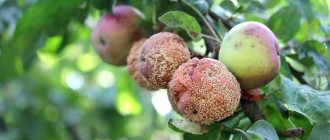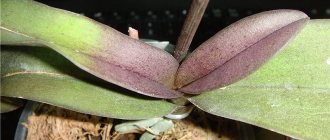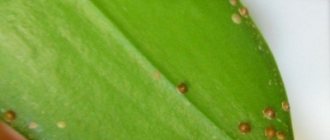Sometimes diseases and pests destroy roses in a matter of weeks. In order not to lose precious seedlings, you need to know by sight everyone who is capable of harming your flower beds, and in the case of roses there are many of them.
In addition to the well-known aphids and rust, numerous bacterial and fungal diseases, as well as insect pests, attack the leaves and buds. Even those that are not able to completely destroy the bushes weaken them, reduce their decorative value and affect flowering. To enjoy the aroma of roses all the time, you need to quickly respond to the slightest changes and competently treat and protect your rose garden.
Caring for indoor roses after purchase
In flower shops, roses are given special care: they are fed with chemicals, the room is always maintained at the required temperature, and the packaging in which the plant is sold maintains a favorable climate for successful flowering.
After the flower gets from the store to the apartment, after a few days it begins to slowly wither, even if it was transplanted into another pot.
Do not delay taking action; you must follow simple rules:
- the flower pot should be removed from drafts;
- provide sufficient lighting and a warm climate;
- do not increase watering;
- do not move from place to place, i.e. the flower should be allowed to get used to the new conditions;
- It is worth tearing off all the ovaries and leaves to allow the rose to gain strength and not waste it on flowering;
A few days after all the procedures, you will have to spoil the beauty - cut off all the stems to 10 cm, leaving only young shoots.
An indoor rose should be planted in several pots if there are several bushes in the pot, thereby ensuring freedom for the root system. After transplanting, do not forget to spray the bush with cool water daily.
Green rose aphid
This pest
(Macrosiphum rosae)
appears in the spring and is located in dense colonies, multiplying very quickly. Affects leaves, buds and young shoots. Aphids suck out the sap and weaken the plants. Overwinters on the above-ground parts of plants.
Green rose aphid
Control measures
It is necessary to carry out two to three treatments with an interval of three days with insecticides of systemic and contact action: Actellik, Aktara, Fufanon or a soap solution, decoctions of tobacco, pepper, garlic.
Recipe for fighting aphids from I. V. Michurin
Take a little soap solution, add a little tobacco decoction, 1 glass of ash and kerosene. Stir well. Spray the plants with the resulting solution. The aphids will disappear in a couple of days.
Why does indoor rose dry out?
If, during the process of acclimatization, unopened buds began to turn black or the rose flowers began to fall off altogether, this is a signal that the indoor rose was frostbitten or already infested with pests. Such a plant should be removed away from other flowers to prevent them from becoming infected.
The flower does not like dry rooms. The temperature should not be higher than 25 °C. Air humidity is approximately 50%.
Spider mites are another reason why indoor roses dry out. As soon as small cobwebs or the mites themselves are noticed, you should immediately tear off the infected leaves and treat the rose bush with chemicals purchased at a flower shop.
If the rose suddenly dries out, the reason may be due to incorrectly selected soil. Too tight, dense soil will prevent the passage of moisture or, conversely, its stagnation in the root system, which will lead to rotting and drying out.
Timely loosening and fertilizing of the soil will solve some problems and prevent premature wilting. The bush should be replanted in a more suitable soil after washing the roots with a weak solution of potassium permanganate.
Rose rust: photos and treatment when fighting the disease
Rust of roses in the photo
With this disease of roses, the affected parts of the shoots become bent and thickened. In spring, orange dust appears on the stems near the opening buds and at the root collar. This is the spring sporulation of the fungus, the causative agent of the stem form of rust. The fungus overwinters in plant tissues infected in previous years. The disease develops more intensely in years with warm and wet springs.
Rust fungi not only take away nutrients from the plant, but also severely disrupt its physiological functions: they increase transpiration, reduce photosynthesis, make breathing difficult and worsen metabolism.
With rose disease, rust on the leaves on the underside in summer, small, red-yellow pads of summer spores form, which can give rise to several generations and infect new plants.
In the second half of summer, winter sporulation begins to appear on the underside of the leaves in the form of small round black pads.
Look at the photo - if this rose disease has severely affected the plant, the entire leaves turn yellow and fall off prematurely:
The spread of rust fungus spores occurs with air flow, water, and planting material.
To protect roses from this disease, one-way nitrogen fertilization should be avoided. In the fall, it is necessary to remove and burn the affected foliage, and in the early spring (before the buds open) spray the plants and the soil around them with iron sulfate (1-1.5%). The soil under the bushes must be loosened and mulched to reduce infection.
To treat rose rust, it is necessary to carefully and promptly trim shoots affected by the stem form of rust; from the moment the buds open, re-spray the plants with Bordeaux mixture (1%) or its substitutes (“Oxychom”, “Abiga-Peak”, “Hom”, “ Copper oxychloride", "Ordan").
Next, you can see photos and descriptions of rose diseases such as black spot, bacterial cancer, gray rot, branch burn and cytosporosis.
Improper care
Even with proper planting, acceptable temperature conditions, and regular spraying, if a rose in a pot withers, you should pay attention to important factors:
- the home rose is in direct sunlight;
- the rose is at risk of excessive watering or cold, unsettled water;
- lack of nitrogen in the fertilizer;
- lack of iron in the soil;
- you are using too many chemicals.
All this leads to the flower dying. If you recognize these negative factors in time, you can protect your favorite roses from death.
Disease prevention
To prevent viral infection, the thermal regime and plant density should be observed. The virus is affected by temperature fluctuations. The spreaders of the viral infection are pests, so it is worth monitoring and promptly destroying them. If the disease does appear, you should isolate the infected plant and treat all equipment. In case of complete death of the plant, it is necessary to destroy it, throw away the soil, and disinfect the pot with special care.
Related article: Gray mold of plants, how to treat
Fungal infections
Fungal diseases are difficult to diagnose. When spots are found on the leaves, it is most likely spotting. If your fears are justified and you do not take the necessary measures, then you can say goodbye to the flower.
The disease is contagious and contact with other plants will lead to their infection too. The fungus spreads and affects weaker representatives of the flora, to which the rose belongs primarily. The leaves will gradually dry out and gradually disappear altogether.
If negative signs are detected on the bush, you must urgently remove the affected leaves and treat the bushes, incl. and healthy, copper-containing preparations.
You should not spray the bush with water during illness to prevent the infection from spreading further. It is important to provide quarantine for this bush, without contact with other plantings.
Variety of mosaics
The fight against mosaic is complicated by the fact that almost all cultures suffer from it. There is often a situation where symptoms of infection by several types of virus can be detected on one plant.
Potatoes can be affected by mottled and wrinkled potato mosaic.
Tomatoes are attacked by tobacco mosaic virus, tomato mosaic virus (ToMV) and sometimes green mottled virus (English).
Cucumber mosaic virus (CMV) and mottled mosaic virus (CGMMV) destroy cucumber crops. In addition to cucumbers, ordinary mosaic can develop on peppers, parsley, cabbage, peas, and lettuce. Speckled blight can be called “highly specialized”, since it affects only watermelons, melons, cucumbers from the cucurbit family and some types of nightshades.
In addition to the listed diseases, in the garden plot you can encounter the mosaic virus of beets, cabbage, and legumes.
Mosaic patterns are also found on fruit trees and shrubs, ornamental grasses and tuberous flowers (tulips, lilies, daffodils, hyacinths, dahlias).
Infectious diseases
In addition to fungi, rose bushes can be affected by infectious diseases - bacterial cancer. It manifests itself as redness and thickening of the stems and roots, and round spots also appear.
After the leaves and stems die off, this type of infection lives in the ground for several more years. In this regard, you should get rid of such soil so as not to infect the next plants that will be planted in this pot. After removing such soil, the pot must be disinfected and, if possible, boiled for several minutes.
There is also a disease called indoor rose jaundice. The carriers of this disease are insects. Diseased leaves become yellowish, gradually wither, and if the spread of this disease is not prevented, it will lead to a disastrous outcome.
Weak areas of the bush should be cut off and burned. If the flower itself is severely damaged by this, and there is no way to revive it, then it is also necessary to burn it so that the infection does not enter the soil and infect other plantings, even if they grow outside.
Roses are susceptible to infectious burns. The leaves begin to dry out from the center, gradually becoming completely brown in color, with pink edging. These areas spread quickly in rooms where there is not enough oxygen, i.e. poorly ventilated. If you don’t miss the moment, the flower can be saved by cutting off only the affected leaves.
Powdery mildew is the second most common disease of indoor roses after spider mites. The white color of the leaves immediately signals a disease. It develops instantly and leads to the death of the flower.
Having noticed an infection, there is no need to hesitate; it is important to immediately begin cutting off the infected leaves and buds. If the disease has affected more than half of the plant, then it is necessary to cut off the bush, leaving shoots 5 cm above the ground. Be sure to follow it with spraying with a special solution purchased at a flower shop.
Preventive actions
To protect roses from diseases and pests, you need to carefully monitor the bushes at all stages of the growing season and respond in time to alarming symptoms. To create favorable conditions, experts advise adhering to the following rules:
- Keep the rose garden, greenhouses, plot and surrounding area clean - regularly pull out weeds and get rid of plant debris.
- Burn remote parts of affected plants away from bushes, as pathogens can persist in the soil for several years.
- Ensure good ventilation in greenhouses.
- Carry out disinfectant treatment of greenhouse premises and garden equipment.
- Maintain optimal soil and air humidity in greenhouses within 70-80%.
- Planting should be done in well-warmed areas protected from the wind, preferably on the south side of the garden.
- Periodically remove faded flowers, as well as lower leaves to improve air circulation in the ground layer.
- Monitor the level of soil acidity, its composition and the ratio of nutrients necessary for plant life.
- Attract insects, birds and animals (ladybugs, toads, lizards, hedgehogs, etc.) to the garden, which are natural enemies of pests.
- Give preference to varieties that are zoned and intended for specific soil and climatic conditions of cultivation.
- Buy planting material from reliable producers.
- Before planting, carefully check purchased seedlings for pests or signs of infection.
- Conduct preventive treatments, sanitary and formative pruning, thinning bushes and tying up shoots in a timely manner.
The risk of infectious infection of climbing varieties is also reduced due to the correct formation of bushes using various types of support and arch structures
The survival rate of plants in a permanent place, as well as further growth, flowering activity and the durability of the bushes depend on the quality of planting material. Seedlings should be selected that are well developed, healthy, without any damage to the trunk or roots. This will help prevent the introduction of dangerous viral and fungal infections to the site.
How to cure a rose
You can revive roses after illness using a few tips:
- Place a stand 10 cm high in a basin. Place a flower pot on top, slowly pour boiling water into the basin, make sure that the water does not reach the shoots, steam the plant in such a bath until the water cools completely;
- It would be good to spray a room rose with mineral water;
- put the flower pot in a cool place at about 15-17 ° C for several days.
How to save an indoor rose in winter, when there is little sunlight and the days are short?
It is necessary to provide the flower with additional lighting. Install fluorescent lamps above the flowers and turn them on in the evening.
The soil in the pot should always be moist, the plant loves water, and in winter, when the batteries are turned on, the air in the room becomes dry and the soil gives up moisture faster. Do not forget about daily spraying with cool, settled water.
Rose leaf roller
Rose leaf roller
(Orchis rosae)
- butterflies whose small blackish-green caterpillars damage young shoots, buds and leaves that curl up in the shape of a cigar.
Rose leaf roller. Photo from wikipedia.org
Control measures
The easiest way to fight is to collect and destroy the caterpillars.
Treatment of rose bushes with systemic or bacterial preparations, as well as a decoction of tobacco and garlic
or onions.
Fighting methods
Unfortunately, an effective way to combat the infection has not yet been found. In case of a partial outbreak, it is cut out with a sharp sterile instrument, including nearby areas, and sprayed with Karbofos (75 g per bucket of water). This operation cannot stop the infection, but it can protect nearby bushes.
With radical coverage, the answer to the question of how to get rid of an enemy in a garden or vegetable garden is clear - the specimen is dug up and burned, after which the work clothes are boiled to neutralize accidentally introduced microorganisms that remain viable for a long time.
Downy mildew or downy mildew of roses (lat. Pseudoperonospora)
It occurs due to a fungal infection and infects plants in early summer. Spores are spread by rain and wind. Development is favored by a sharp drop in temperature, swampy soil, high humidity, as well as shaded areas with poor air ventilation. The disease affects many ornamental plants, vegetables and berries.
Signs of rose disease and their treatment with photos
- Shapeless dark red or purple spots appear on the leaf plate; over time, the foliage begins to lose shape, curl and fall off;
- Cracks appear on the stems of roses, the leaves of the buds darken and die;
- Using a magnifying glass, you can see the cobwebs on the back of the leaf.
Signs of downy mildew on rose leaves
Treatment and protective measures against peronosporosis
- Plants infected with downy mildew should be completely uprooted and burned away from healthy ones;
- For small lesions, treat roses with fungicides (Strobi or Ridomil Gold);
- During the formation of buds, spray with products containing copper and zinc (Bordeaux mixture, Cuprozan, Ditanom-M45;
- Treat in a timely manner with fertilizers containing potassium and phosphorus.
Beans and peas
Legumes are characterized by a deformed and ordinary mosaic variety, expressed by curly and wrinkled appearance.
The lower tier acquires a distorted rosette with yellow and white marks. The pods have veins that lead to rot. The peas turn yellow or turn pale.
Photos of mosaics on plants demonstrate how mercilessly it disfigures them. The main hope is correct agricultural technology, compliance with crop rotation, resistance to bedbugs, mites, and nematodes. The insidious enemy can be defeated only by attentive attitude towards the wards and implementation of recommendations.
Root cancer
Root cancer
Cause. A hard growth at the point of contact between the soil and the stem of the rose - this is how root cancer manifests itself. The main factors in the occurrence of a bacterial disease are external damage to the flower or overzealousness when fertilizing it. Such hard compactions in most cases lead to the death of the plant. It is also possible that the virus may manifest itself at the site of grafting of the budded rose.
The infection can affect any variety of roses, but flowers that are grown on clay surfaces are most susceptible to it.
Treatment. The first step is to remove the growth from the affected area of the flower. You need to cut it carefully using a treated sharp knife. Anything cut from the plant must be removed from the garden and burned.
After which, the affected areas on the roses need to be treated with special preparations. There are many specialized disinfectants available to combat bacteria. But summer residents usually use a one percent solution of copper sulfate.
After treatment, you need to wait 5-7 minutes and rinse the flower with water. In most cases, after such first aid is provided, the flower survives.
But if the plant still dies, it is recommended to dig it up and change the soil in the hole before planting another seedling.
Rosen scale insect
Rosen scale insect
(Aulacaspis rosae)
- These are small insects that look like scales, as their body is covered with a white shield. Found on rose shoots and leaves. It sucks sap from plants, secreting a sticky liquid on which sooty fungus quickly develops. With severe damage, the plant slows down, and the leaves turn yellow and fall off.
Control measures
Remove insects by hand using a damp cloth or cotton wool. Treat the entire plant three times with an interval of 7–10 days with systemic drugs: Aktara, Fufanon. You can use soap-kerosene or soap-garlic infusion.
Potato
The tops are decorated with longitudinal stripes, acquiring roughness. Growth is slowing down. Spindle-shaped tubers with lost taste are born in small quantities, in most cases dying.
Shrubs
Grapes, raspberries, gooseberries, and currants did not escape the fate of the victims; they are destroyed by a veiny disease with marks of different tones. A visual indicator is the discoloration of the leaf plates, their curling and the appearance of being scorched by a flame. The development of young branches is suspended.
Cabbage
The pathogen causes pale leaf veins and the appearance of necrotic spots. The fabric wrinkles, and the head of cabbage even breaks due to its fragility.
There are no cabbage varieties that resist this harmful infection.
Tomatoes
The focal area looks like a burn and destroys a third of the tomatoes; you can recognize it by the following signs:
- coloring the leaves in a rich color with the formation of specks;
- tomatoes painted with dark green strokes are deformed.
The subsequent course of the pathological process is accompanied by blackening and rotting of the inside.











